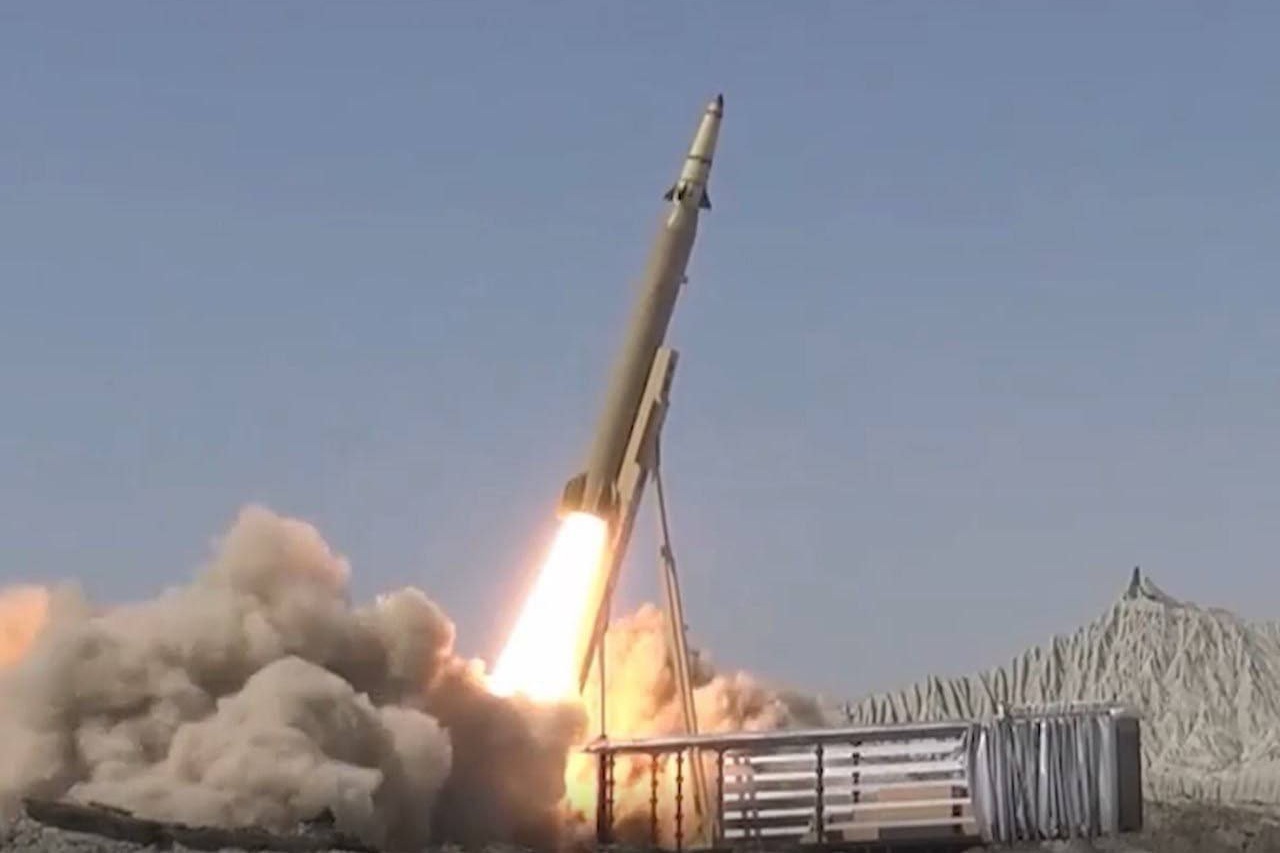AN/TPY2 Radar System, a Defeated Opponent of Iranian Missiles
TEHRAN (Defapress) - In recent days, the United States has claimed in the digital and media space that it can produce radars capable of countering missiles from the Islamic Republic of Iran, China, and North Korea, in sync with the modernization of their missile systems.

To what extent this claim is valid requires further investigation. However, the first point that comes to mind is that the hypersonic missiles produced by various countries have at least managed to penetrate the $1.5 billion THAAD missile defense system, which the U.S. military heavily relied on.
The launch of a hypersonic ballistic missile by the Yemeni army and popular forces was a precise witness to this claim, as the missile penetrated various missile defense shields and traveled approximately 2,000 kilometers before landing at Ben Gurion Airport in the occupied territories.
Now, a new claim has been made by "Lara Korte," a reporter and columnist for the "Stars and Stripes" website, who states that the United States has received new systems capable of countering hypersonic missiles in sync with enemy arsenals.
"Lara Korte" says: Last week, the company announced in a statement that "Raytheon" has recently delivered a new radar to the Missile Defense Agency. The U.S. Department of Defense now has its first "AN/TPY-2" radar with a full array of "gallium nitride," allowing it to track smaller objects at longer distances. The aforementioned radar system has long been the primary tracking device for the "THAAD" regional defense systems deployed in several other countries, including Israel (the occupied Palestinian territories).
The website adds: A radar system capable of tracking missiles flying at 5 times the speed of sound has been delivered to the U.S. Army, marking a fundamental upgrade in one of the U.S. military's most essential missile defense systems.
Field reports indicate that the aforementioned systems have recently been delivered to the U.S. Department of Defense's Missile Defense Agency, and newer versions have also been developed, newer versions that could enhance U.S. defensive capabilities. However, this still needs to be examined more closely.
In 2016, "Raytheon" attempted to integrate "gallium nitride" into the "AN/TPY-2" radar system at a cost of approximately $15 million. "Lara Korte," a defense reporter for "Stars and Stripes," claims this effort was successful. In 2020, several of these radars were handed over to the Saudi Arabian military under a $2 billion contract to counter threats, though these radars apparently have not been effective, as since 2023, missile attacks by the Yemeni army and popular forces on the occupied territories have continued unabated, with most hypersonic missiles and drones easily penetrating Saudi airspace and triggering alarms in occupied Quds and Jaffa.
The "Stars and Stripes" defense reporter further claims in her analysis that this system can intercept missiles from China, Russia, and the Islamic Republic of Iran, which possess a large number of such missiles. In response to this claim, one can point to the successive missile operations by the Yemeni army and popular forces against the occupied territories and the "True Promise 1 and 2" operations, where various missiles were launched, and advanced U.S. radar systems failed to intercept them.
The West Asia news editor of "Stars and Stripes" somewhat claims that the U.S. can intercept hypersonic ballistic missiles launched by the Ansar Allah movement and the Islamic Revolutionary Guard Corps Aerospace Force with this missile defense system. However, this seems to be an exaggerated claim, as in the past, advanced U.S. systems like Patriot and THAAD have shown weaknesses against Iranian and Yemeni ballistic missiles.

According to officials from the defense manufacturing company Raytheon, the new radars delivered to the U.S. Department of Defense can ultimately track targets moving at 5 times the speed of sound. If we consider Mach 1 as the speed of sound, the maximum tracking speed of these radars is about 6,125 km/h. Therefore, it is impossible for this radar system to successfully intercept missiles like the Fattah, which travels at 13 to 15 Mach, or the Khorramshahr missile, with a base speed of 8 Mach.

Additionally, the Qassem Basir ballistic missile was recently developed by the Ministry of Defense and Armed Forces Logistics of the Islamic Republic of Iran, with a range of approximately 1,200 to 1,300 km and high speed, capable of overwhelming any advanced radar system. However, no details have been mentioned about the speed of the Qassem Basir missile. Still, if this missile is an upgraded version of the Fattah hypersonic missile, it will undoubtedly exceed 12 Mach, making it nearly impossible for the U.S. military to counter such a missile.
Brigadier General Aziz Nasirzadeh, Minister of Defense and Armed Forces Logistics of the Islamic Republic of Iran, says in this regard: This missile identifies a specific target among multiple targets and strikes it without deviating even a meter, without relying on GPS navigation systems.
Moreover, the Fattah missile also has significant capabilities in penetrating advanced missile shields. Brigadier General Amir Ali Hajizadeh, Commander of the Islamic Revolutionary Guard Corps Aerospace Force, says in this regard: Due to its technology, there is no anti-missile defense against the Fattah missile. This is while anti-missiles exist for other weapons like tanks, warships, aircraft, etc., and even for other missiles, counter-missiles have been developed.
